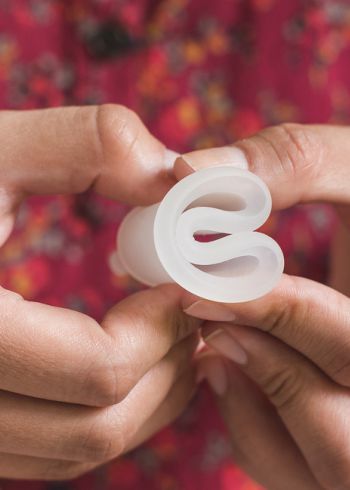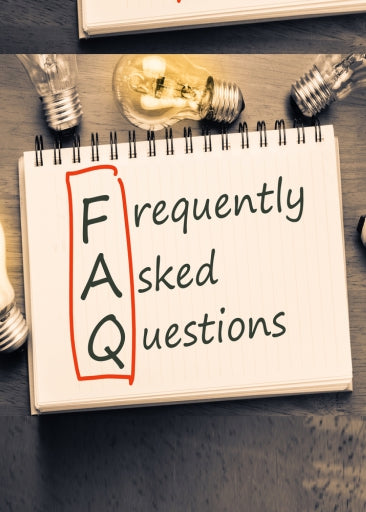Menstrual Cycle: Human Female Reproductive System

An Incredible Process of Female Reproductive System to Create a Life
Over the years, Indian women have shied away from talking about menstruation. It has been considered a social taboo and is equated with sin. A woman shedding menstrual fluids is seen as impure and is thus restricted from participating in multiple activities. Due to this inherent stigma, many women do not possess any primary knowledge about the Menstrual Cycle and its impact on the female reproductive system.
Nonetheless, with the shift in the mindset, the scenario is changing rapidly. Women are learning to embrace the Menstrual Cycle and recognize it as a valuable gift to create life. To celebrate period positivity, ladies are ditching traditional products like Sanitary Napkin/ Tampon and making a switch to the next-gen product i.e. silicone-based Menstrual Cup.
So, today, let’s learn about the female reproductive system and everything related to it.
Read on!
The Onset Of Menstrual Cycle:
Do you remember the day when you got your 1st period? All of a sudden you were no longer a little girl. Everyone starts seeing you as a grown-up lady. Your 1st period marks the onset of your Menstrual Cycle. Medically, it is known as Menarche.
It is an indicator of the maturation of a female body and is identified with the potential to reproduce. Depending on the geographical region, ethnicity, and race, females experience Menarche at variable ages. Nonetheless, the mean age has been stated at 13 years.
What is a Menstrual Cycle?
Menstrual Cycle is a chain of hormonal occurrences that a woman’s body undergoes to prepare for the likelihood of pregnancy. It lasts between 24-38 days and typically varies from woman to woman. The length also tends to vary from cycle to cycle and keeps on changing over the years.
What exactly happens during a Menstrual Cycle?
The female Reproductive System consists of two Ovaries. Each month, any one of the Ovaries releases an Egg (ovum). After the Egg is released from the Ovary, it starts off its journey to reach the Uterus via Fallopian Tube. The process is known as Ovulation and is an important part of the women’s period cycle.
On the other hand, the Uterus which is one of the major parts of the female reproductive system prepares itself for fertilization of the released egg. If the Egg fails to get fertilized by a sperm, the lining of the uterus(endometrium) is shed and comes out vagina as Menstruation.
Before we learn about the cycles & phases of the Menstrual Cycle, it is crucial to understand the anatomy of the Female Reproductive System.
What parts make up the Female Reproductive System?
The female Reproductive System comprises Internal & External Reproductive Structures. Internal Reproductive Structures include Ovaries, Fallopian Tubes, Uterus, and Vagina. Each of their unique functions governs the Menstrual Cycle, which occurs every month.
Diagrammatic Representation Of Female Reproductive System

Cycles & Phases of Menstrual Cycle:
Did you know that the Menstrual Cycle consists of 2 cycles? Certainly, it is not just about PERIODS! Let us understand how each cycle operates to regulate the Menstrual Cycle.

1.Ovarian Cycle:
Follicular Phase:
In the Follicular Phase, the Hypothalamus which is located in the center of the brain sends a signal to the Pituitary Gland to release Follicle Stimulating Hormone (FSH). As a result, Ovaries receive a prompt and produce small sacs called follicles.
The Follicle which has the highest Follicle Stimulating Hormone (FSH) receptor will reach the stage of maturity and grow a mature Egg (ovum). The Follicular Phase, also known as the Preovulatory Phase lasts up to 10-16 days.
Ovulation:
With the maturity of a Follicle, extra Estrogen is released into a woman’s body. The increase in Estrogen gives a green signal to the Pituitary Gland to release Luteinizing Hormone (LH). LH helps in weakening the follicular wall and releases the egg (ovum) from the Ovary.
Next, the Egg (ovum) reaches the Uterus via Fallopian Tube. The Egg (ovum) has a window of 12-24 hours to get fertilized with Sperm. Past that period, it will diffuse. If you have a 28-day Menstrual Cycle, Ovulation takes place on the 14th day
Luteal Phase:
The Luteal Phase is the last leg of the Ovarian Cycle. After the mature Ovarian Follicle releases an Egg (ovum), the remaining parts change into the Corpus Luteum. All thanks to Follicle Stimulating Hormone (FSH) and Luteinizing Hormone (LH)! Thereafter, Corpus Luteum starts releasing Progesterone which further induces the production of Estrogen.
The rise in Progesterone helps to strengthen the lining of the Uterus which is essential for the implantation process. In case, the Egg (ovum) successfully meets with a Sperm, a woman’s body will release Human Chorionic Gonadotropin, commonly known as hCG.
On the other hand, if the Egg fails to get fertilized, the Corpus Luteum will undergo diffusion. Subsequently, it will lead to the fall of Progesterone and Estrogen levels and mark the beginning of Menstruation. The mean length of the normal Luteal Phase is placed at 14 days. During the Luteal Phase, it is common to experience Premenstrual Syndromes (PMS) like irritability, mood swings, insomnia, headache, swelling of the breasts, and food cravings.
2.Uterine Cycle:
Menstruation Phase:
If the mature Egg( ovum) fails to meet the Sperm, the lining of the Uterus which is essential for the implantation process is no longer required. Thus, it disintegrates, sheds through the Cervix, and passes out through the Vagina as Menstruation. It typically lasts for 3-7 days.
The menstrual fluids are nothing but a mixture of a combination of blood, cervical mucus, endometrial tissue, and vaginal secretions. During this time, it is usual to experience symptoms like Cramps, headaches, lower back pain, mood changes, and irritability.
After your period is over, the human Female Reproductive System preps up to repeat the incredible cycle.
Yes! ALL OVER AGAIN
Once you get your periods between the age of 10 and 13, the Menstrual Cycle occurs every month until Menopause.
Menopause usually happens between the age of 40-50 and marks the end of the reproductive potential of a female. One of the key signs of hitting Menopause is when a woman doesn’t experience Menstruation for 12 months straight.
How to maintain Menstrual hygiene?
– If you are using Sanitary Napkins/ Tampons, make sure to check the flow and change it every 2-4 hours to prevent infection.
– Don’t forget to change your underwear.
– Clean the pubic area with lukewarm water.
– Dispose of Sanitary Napkins/ Tampons properly. It is recommended to cover them in a newspaper and put them in a plastic bag before tossing them in the dustbin. If you are using a Menstrual Cup, make sure to sterilize it properly.
– Never use scented soaps to cleanse your vagina.
How can you track the Menstrual Cycle?
Owing to advanced technology, now you can track your Menstrual Cycle with Apps. Tracking the dates will assist you to identify any irregularities in your Menstrual Cycle.
What causes irregularities in the Menstrual Cycle?
Menstrual Cycle can exhibit irregularities for multiple reasons. Major causes include:
– Pregnancy
– Breast Feeding
– Polycystic Ovary Syndrome (PCOS)
– Uterine Fibroids
– Birth Control Pills
If you are noticing irregularities in your Menstrual Cycle, it is advisable to set up an appointment with your Gynaecologist to seek medical help.
All I Want Is A Peaceful Period Click here!
Also, you can read the blog: Are Indian Women Ready For The Best Menstrual Cup in India
- Posted in female reproductive system, female reproductive system anatomy, female reproductive system diagram, female reproductive system functions, human female reproductive system, parts of female reproductive system, women menstrual cycle, women period cycle













